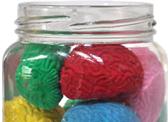Imagined movements – think (and see) yourself stronger
We know visualisation has been used in sports to enhance performance, and now visualisation or explicit motor imagery is also an integral part of chronic…


noijam: nɔɪdʒæm, since 2013
Ad. Spreadable, digestible, sticky, musical, noisy, flavoursome, harmonious, collaborative
Noun. Communal music session, crowd, signal interference, tight space
Verb. Press, squeeze, crowd
A new class of rehabilitation professional is now emerging – we can call this person a clinical scientist (or scientific clinician). Here we are referring to a professional at the clinical battlefront who uses reasoning science to integrate the best of modern science to help the patient in front of them. Clinical scientist activity ranges from reading and integrating science in the clinic to active data collection and analysis. This blog is for clinicians in the world of science.
Noijam is about:
We welcome all helpful, respectful, constructive and reasoned comments and questions on Noijam. All comments are checked before they appear and some delays due to time differences may be encountered.
Comments that will not be allowed include those that:
There are nearly two billion people in the world with an ongoing pain state – we can’t take questions from individual sufferers nor can we provide individual treatment advice but we do have a find a clinician service where you can locate clinicians around the world with Explain Pain education. You may also find reading the clinically orientated stories within noijam helpful.
Enter your name and email address to receive notifications of new noijam blog posts by email.
We know visualisation has been used in sports to enhance performance, and now visualisation or explicit motor imagery is also an integral part of chronic…
In the assessment of a chronic pain or stress sufferer, we often seek information on “the things you hear, see, smell, touch, and taste”….
Delayed pains post-injury – or latent pain – seem quite common and can be hard to integrate clinically. You can never really be sure that a…
Have you ever used the example of phantom limb pain to explain the idea of a ‘map in your brain’ and ‘brain smudging’? I do…
Last week I was invited to have lunch with the staff at a physiotherapy and multidisciplinary clinic in Vancouver –Tall Tree Physiotherapy. While the meatballs…
Don’t miss out – early bird prices for NOI’s Auckland courses are ending on the 15th of October 2018 – that’s in just 3 weeks! EXPLAIN…
Joe Tatta has interviewed David Butler for The Healing Pain Podcast in an episode entitled ‘Explain Pain and the Biopsychosocial Model’. You can check out…
Words can be powerful stimulants. They can evoke ideas, feelings and sensory and motor imagery. “Whack, plop and buzz” – say them aloud and slowly….
I can recall an elderly neurologist presenting an undergraduate lecture in the early ’70s on peripheral nerve problems. I remember it because of a comment…
Many metaphors can be used to discuss the upregulated nervous system and the over-protective nature of persistent pain. One of these is “Sensitive Sensor Lights”….